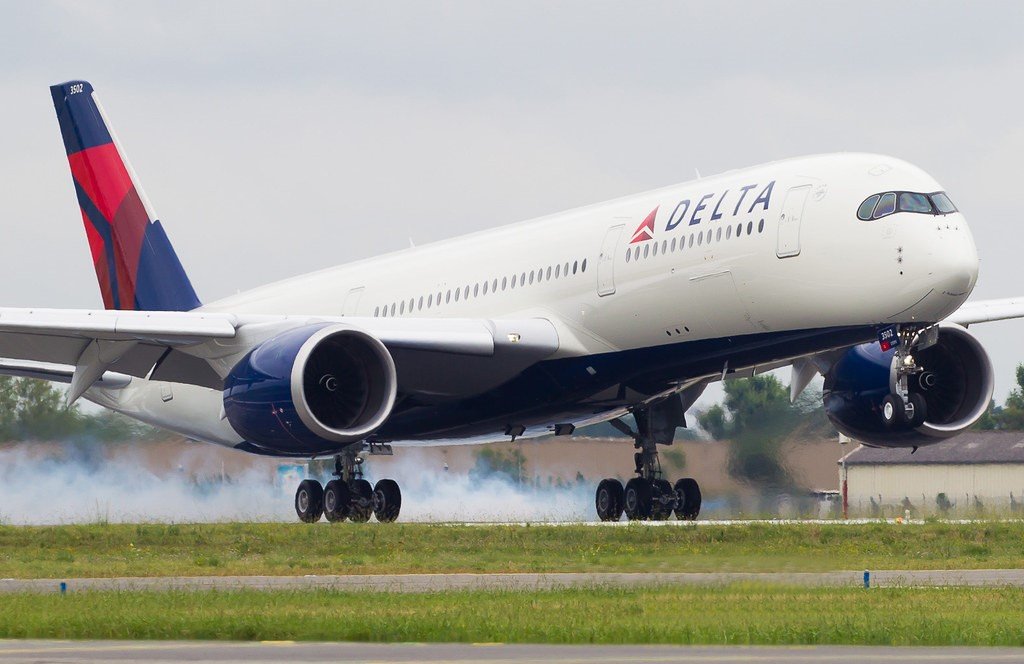Ever had your flight plan completely flip halfway through a journey? That was the roller-coaster for passengers aboard Delta Flight DL275, a Detroit–Tokyo leg that suddenly touched down in Los Angeles. Let me walk you through the whole saga — in true chat-over-coffee style.
Delta Flight DL275: From Detroit to Tokyo… Almost
DL275 was supposed to fly from Detroit (DTW) to Tokyo Haneda (HND) aboard an Airbus A350-900, a modern wide-body bird built for long hauls. The flight was cruising over the North Pacific, about 620 nautical miles southwest of Anchorage, when things went off-script. Travel And Tour World+15Travel And Tour World+15LinkedIn+15.
What Was the Original Plan for Delta Flight DL275?
Scheduled to be a smooth ~12-hour trip across ~6,400 miles, DL275 was part of Delta’s international network. A high-comfort, high-tech flight meant for business travelers, families, and anyone who wants to skip the chaos of layovers, The Tundra Drums.
When Did Things Change for DL275?
It all changed around 00:31 UTC. That’s when an “ICE PROT DEGRADED” warning surfaced on the cockpit screens. The anti-ice system on one engine was misbehaving. Five minutes later? Temp sensors started acting up. Within 15 minutes, the crew had escalated it to a “MAYDAY” situation. Diversion to LAX was official by 01:08 UTC, and the plane landed safely on Runway 06R after about 12 hours and 15 minutes in the air Aero Online+5sylveer.com+5sukıtır+5.
Why Was the Anti‑Ice System a Big Deal?
Here’s the thing: over the Pacific at 38,000 feet, it gets really cold—like, “ice crystals forming on engine components” cold. The Rolls‑Royce Trent XWB engine anti‑ice system uses heated bleed air (400‑600°F) to prevent ice. Without it, there’s a real risk of engine thrust issues or damage. So yes, it’s absolutely critical Travel And Tour World+5The Tundra Drums+5sylveer.com+5.
Why Did the Flight Choose LAX Instead of Going Back to Detroit?
Why not return to Detroit or land in Anchorage or Seattle? Because LAX is a major Delta hub with certified A350 maintenance facilities, Rolls‑Royce-trained technicians on standby, and support to handle large jets like the A350 immediately. It was a calculated safety-first decision, Sylveer Com+9Travel And Tour World+9Coruzant Technologies+9.
What Happened During the Diversion?
Once on the ground at LAX:
- Engineers performed a full diagnostic and repaired the defective anti‑ice system.
- Passengers were kept informed, medical staff checked in, and meals and hotel stays were arranged.
- Most remained on board, others deplaned for rest before rebooking to Tokyo.
- After about 18 to 18.5 hours, the aircraft was cleared and returned to service. Travel And Tour World+2Aero Online+2Wisp Willow+2sylveer.com+3LinkedIn+3Travel And Tour World+3Travel And Tour World.
How Long Did the Plane Stay on the Ground?
Roughly 18 hours, while maintenance crews replaced or fixed the anti‑ice components and confirmed everything was safe to restart. The aircraft (registration N508DN) resumed service by mid‑June 2025, Axis Intelligence+9LinkedIn+9The Tundra Drums+9.

How Did Passengers Handle the Situation?
Flight attendants and the captain spoke calmly. One passenger said Jennifer: “The captain was assuring, clear, and honest—no panic, just facts.” Another praised the crew for keeping everyone calm and safe. Many were rebooked or compensated with meals and accommodations at LAX before continuing their journey. The Mystery Magazine+1LinkedIn+1.
Did the Airline Say Anything About the Diversion?
Delta didn’t release long statements, but officially confirmed the diversion was precautionary, citing a technical malfunction. The crew reported the issue, the operations team activated the safety protocols, and LAX was chosen swiftly. Passengers were re-accommodated without injuries or escalation, Travel and Tour World.
What Makes This Diversion Different From Others?
Diversions aren’t super common—maybe around 1 in every 1,000 flights, and most are from minors like medical emergencies or turbulence. But this one centered around a critical engine anti‑ice failure mid-ocean, not just a passenger or weather situation. That’s rare and significant, Wisp Willowonetech1.com.
Could the Flight Have Continued to Tokyo?
Technically, yes—but that would mean flying many hours without functional anti‑ice protection in freezing conditions—risky. Continuing wasn’t an option. Diverting early was the safer, smarter plan, LinkedInsylveer.com.
Was Anyone in Danger on DL275?
Thankfully, no actual danger occurred. The crew’s quick thinking prevented escalation. It was a controlled diversion, not an accident. All passengers and crew were safe. Delta praised the crew’s professionalism in post-incident commentary, though details were brief. Travel and Tour World.
How Often Do Flights Like This Get Diverted?
Anti‑ice system failures are rare. Diversions happen, sure—but major long-haul ones due to engine safety issues are very uncommon (less than 0.01% according to aviation stats). These are notably serious incidents, often requiring major checks and repairs. The Mystery Magazine+13Wisp Willow+13Travel And Tour World+13.
What Can Travellers Learn From This Event?
- Safety over schedule — cancelling a segment is better than risking it.
- Know your rights — meal, hotel, and rebooking assistance are often required.
- Pack essentials — medications, chargers, comfy clothes in carry-on.
- Stay calm — transparency from the crew matters enormously.
- Track your flight — tools like FlightAware or Flightradar24 show diversions live Coruzant Technologies+4Travel And Tour World+4clogtheblog.com+4Travel And Tour World+3sylveer.com+3sukıtır+3sukıtır+1My Blog+1The Mystery Magazine+1Wisp Willow+1.
What Is the Airbus A350‑900 Like?
A flagship modern jet known for comfort, fuel efficiency, and range. The Rolls‑Royce Trent XWB engine is state-of-the-art. But with higher tech comes higher sensitivity, making systems like anti‑ice essential and complex Coruzant Technologies+5Travel And Tour World+5Travel And Tour World+5.
What Happened After the Diversion?
- Aircraft repaired and recertified.
- DL275 resumed service around June 20, 2025, with excellent on-time reliability thereafter.
- Booking levels quickly returned to normal—passenger confidence intact wheoncricket07.com+15sukıtır+15My Blog+15.
Final Thoughts
The story of Delta Flight DL275 diverted to LAX isn’t about a failure—it’s a testament to training, teamwork, and prioritizing passenger safety. From a warning light over the ocean to a safe landing in L.A., the response shows how the aviation system strives to right itself under pressure.
When technology, crew skill, and planning intersect, even unexpected headwinds become manageable.
So next time you buckle in, remember: the systems and people behind your safety are finely tuned for just these moments.
FAQs
1. Why was Delta Flight DL275 diverted to LAX?
Due to a critical anti‑ice system failure on one Trent XWB engine over the North Pacific—a risk too serious to continue, Aero Online+11, Tundra Drums+11LinkedIn+11.
2. Was anyone injured?
No. The crew managed the situation perfectly, and all passengers landed safely.
3. How long was the delay?
The aircraft was grounded for about 18 hours while repairs and testing happened at LAX.
4. Why choose LAX instead of other airports?
LAX had the specialized A350 maintenance facility, spare parts, expert technicians, and good passenger handling capacity LinkedIn+1clogtheblog.com+1Simple Flying+6Travel And Tour World+6Travel And Tour World+6.
5. How frequent are diversions due to engine malfunctions?
Very rare—less than 0.01% of flights. Still, when it happens, it’s serious and usually costly.




